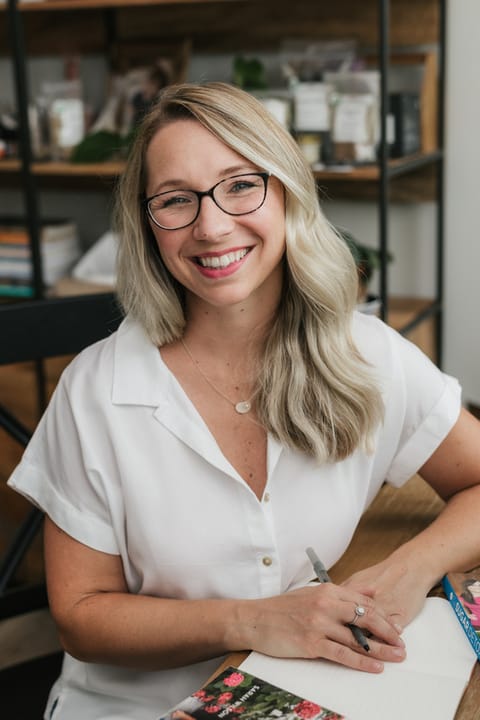Toxin Awareness: Aggie's Journey

Aggie Shah is a certified Integrative Nutrition Health Coach and Yoga Teacher, specializing in personalized health coaching. With a focus on weight loss, healthy habit changes, reducing autoimmune disease symptoms, cutting back on sugar, reducing toxin load, improving sleep, and stress management, Aggie's approach is deeply rooted in education and empowerment.
For more information about Aggie Shah's transformative health coaching services and to explore how she can support your journey towards better health, please visit her website at True North Health and Wellness. If you're ready to take the first step towards a healthier, more balanced life, I encourage you to book a discovery call with Aggie.
Cole: "Aggie, can you share your journey into health and wellness and what drew your interest specifically to toxins?"
Aggie: "Sure, it's quite the tale! It all began in college, believe it or not. My boyfriend’s mom used to give me a hard time about our air fresheners, saying they were toxic. I remember thinking, ‘They’re just essential oils, right? How bad could they be?’ I was totally taken in by the marketing and kind of brushed her concerns off, even though, looking back, she was onto something.”
"Then, in grad school, while diving into my thesis on the organic clothing market in Maine—sounds riveting, I know—I had this eye-opening moment about the toxins lurking in our everyday lives, not just in what we eat but what we wear. It’s funny; my master’s was in supply chain management, not exactly the wellness track, but here I was, learning about toxic dyes and industry practices. I had thought that companies with popular so-called sustainable brands were the good guys, and they are in many ways, but back then, I was shocked to learn about the environmental impact of their dyes.”
“The real wake-up call, though, came with my health scare. Being diagnosed with precancerous cells in my late twenties shook me to my core. My doctor was all doom and gloom, pushing for surgery with a sort of urgency that felt more alarming than the diagnosis itself. That’s when I took a step back and thought, ‘There has to be another way.’ Working with a naturopathic doctor, I revamped my diet, scrutinized my personal care products, and started to really understand the toll these toxins were taking on my body. Throwing out my favorite perfume wasn’t easy—it felt like saying goodbye to a dear friend—but it was part of a bigger, more important change.”
“This journey wasn’t just about avoiding toxins or changing my diet; it was a profound shift in how I view health and wellness. It’s about everything that touches our lives—from the food we eat to the products we use and even how we handle stress. It’s been a learning curve, for sure, but one that’s made all the difference. And if sharing my story helps even one person rethink their choices, then it’s all been worth it."
Cole: “That’s quite an inspiring health and wellness superhero origin story! I love it. What’s great about this newsletter is that I selfishly benefit from interviews like these in my personal and family life.”
“So now that we know how developed your passion in this field is, how would you define a toxin?”
Aggie: "A toxin, in the simplest terms, is any ingredient that might cause, or is known to cause, negative impacts on human health or the environment. This dual harm can manifest in various ways, from harming human bodies to damaging ecosystems. Take sunscreen as a pertinent example, which has come under scrutiny for containing substances like oxybenzone and octinoxate. These chemicals, now banned in places like Hawaii due to their devastating effects on coral reefs and marine life, serve as prime examples of toxins that are harmful both to us and the planet.”
“Moreover, there are two main types of sunscreen: chemical, which absorbs the sun’s rays into the skin, and physical, which reflects sunlight off a layer on the skin. The latter, often made with non-nano zinc oxide, doesn't penetrate the skin or harm marine ecosystems, making it a safer choice for both our health and the environment. Beyond choosing safer products, I advocate for natural sun exposure to build tolerance and enhance vitamin D levels, a crucial aspect often overlooked when sunscreen is overused. This balance is key to maintaining health without inadvertently contributing to environmental harm."
Cole: “I'm sure there's quite a lot of overlap. If something's toxic to humans, it's probably toxic to the environment and vice versa, considering we're all part of this ecosystem."
Aggie: "Exactly, and there's a clear example of this overlap with sunscreen. In the past few years, there's been a lot of talk about the ingredients oxybenzone and octinoxate in sunscreens. These chemicals, found in what's known as chemical sunscreens, do prevent the sun's rays from penetrating the skin but they can also enter your bloodstream and harm coral reefs, which led to their ban in places like Hawaii. In contrast, mineral sunscreens, which use zinc oxide, create a physical barrier on your skin that reflects the sun's rays. These are not only safer for our bodies but also for marine ecosystems. It's an excellent example of choosing products that are good for both us and the environment."
Cole: "What are some common everyday toxins and their most dangerous sources?"
Aggie: "Navigating everyday toxins requires understanding their sources across different aspects of our daily lives. In personal care products, toxins lurk in items as common as shampoos, conditioners, and especially deodorants that contain aluminum, which is linked to cancer and blocks natural detoxification through sweating. Switching to products with essential oils or minimal ingredients can mitigate these risks. It’s important to emphasize the body's need to detox naturally.”
“In the kitchen, the misuse of plastics, silicone, and aluminum foil during cooking poses significant health risks. Microwaving plastic or silicone can release harmful toxins into food, and heating silicone bakeware or aluminum foil is equally hazardous. A shift towards safer cooking practices, such as avoiding these materials and opting for non-toxic alternatives, is crucial.”
“Furthermore, the conversation extends to disposable items and cookware with nonstick coatings, which also present health dangers. Awareness and cautious selection of cooking utensils, personal care, and cleaning products can significantly reduce toxin exposure in our everyday lives and lead to a healthier lifestyle and environment."
Cole: "Can you describe the short-term and long-term health effects of toxin exposure?"
Aggie: "Toxin exposure can manifest through both immediate and delayed health consequences, deeply affecting our body's natural functions and responses. In the short term, symptoms like eczema, especially prevalent in babies, or asthma attacks triggered by sensitivities, such as to fragrances, can serve as immediate red flags of toxin exposure. These acute reactions, while significant, only scratch the surface of the potential harm.”
“Long-term effects delve into more severe territories, including hormonal disruptions where substances like phthalates mimic estrogen, potentially leading to a surplus of the hormone. Such imbalances can pave the way for autoimmune diseases, like Hashimoto's, a type of disease that makes your immune system attack your thyroid, which regulates hormones and many essential functions in your body, by compounding the effects of a compromised diet, stress, and environmental factors, including exposure to blue light and a lack of sunlight. Interestingly, fertility clinics often prohibit fragrances due to their impact on hormone health, highlighting the recognized need to minimize toxin exposure to protect and stabilize our body's intricate hormonal balance.”
“The discussion around toxins is not just about pinpointing a singular cause for health issues but understanding how continuous exposure diminishes our body's resilience and healing capabilities. While it's unlikely for doctors to directly link conditions like Hashimoto's to personal care choices, such as fragrance use, it's essential to acknowledge how our daily environments and habits collectively influence our health over time."
Cole: "What simple steps can people take to significantly reduce toxin exposure in their homes?"
Aggie: "Reducing toxin exposure at home can be simpler than many think, beginning with straightforward swaps like replacing plastic with glass containers and opting for personal care products with safer, more transparent ingredients. Prioritize modifications in areas you interact with daily—such as the water you drink and the air you breathe—by installing water purifiers tailored to your home's needs and using air purifiers.”
“Another practical step is to adopt a no-shoes policy indoors to prevent tracking in pollutants from outside. Also, moving away from products that release fragrances into your environment, such as scented candles, can make a noticeable difference. For those looking to delve deeper, resources like ewg.org provide invaluable insights into product safety and help individuals make informed decisions about the items they use daily.”
“My passion lies in empowering people to make healthier choices for themselves and their families, and to understand that even minor adjustments can significantly impact our health and well-being. The aim is to prioritize actions that offer the most substantial health benefits, such as ensuring clean water and air within our homes, to foster a toxin-free living environment."
References:
Natu.org. (2021, September 23). Let’s talk about silicone.
https://natu.org/2021/09/23/lets-talk-about-silicone/
(2022). Fragrance loophole [BC Business Consultant]. Vimeo. https://vimeo.com/924693763



